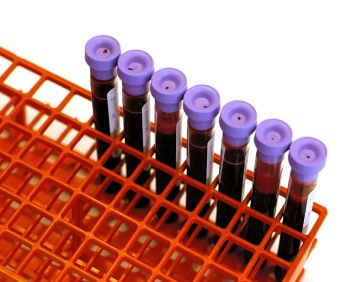Life on the edge (of a tumor)
For the surgical removal of tumors, a key concern is getting a clean margin – making sure the cancer is completely gone. Tumor recurrence in the same location is common, suggesting that the remaining “normal” cells already have molecular changes that are not detected by current histopathology-based diagnostic techniques. MALDI MS is a proteomics technology that has the sensitivity to identify such molecular changes.
Richard Caprioli, Ph.D., and colleagues used MALDI MS to compare tumor and nearby normal tissue from human renal cell carcinoma biopsies. They found that the histologically normal tissue adjacent to the tumor shares many molecular characteristics of the tumor tissue, such as changes in the expression of proteins involved in mitochondrial energy production.
The findings in the May issue of the Journal of Proteome Research demonstrate that MALDI MS is a powerful tool for discovering the molecular changes in and around tumor margins. They also suggest that it has potential as a diagnostic technology for defining molecular tumor margins.
— Leigh MacMillan
Progress on lung cancer blood test
Up to 30 percent of lung nodules evaluated surgically (biopsy) turn out to be benign, indicating a need for noninvasive diagnostic tests to help reduce these unnecessary surgeries, which carry low but real risks.

iStockphoto.com
Eric Grogan, M.D., M.P.H., Pierre Massion, M.D., and colleagues evaluated the accuracy of a blood protein signature – which they previously found to be associated with lung cancer – in distinguishing benign from malignant lung nodules in 58 patients. They found that the blood test was highly specific and had a high positive predictive value: 92 percent of patients with a positive test had confirmed malignant lung nodules. However, a negative test result did not provide additional value to clinicians.
The results, reported in the June Annals of Thoracic Surgery, suggest that while the current blood test would not eliminate all unnecessary surgeries, a positive test result may help reduce the need for surgical biopsies in patients that are not good candidates for surgery – and may help initiate non-surgical treatments sooner for those patients.
— Melissa Marino
Schizophrenia data: one-stop-shopping
Schizophrenia, a debilitating psychiatric disorder that affects about 1 percent of the worldwide population, is thought to result from the complex interplay of genetic and environmental factors. Vast amounts of schizophrenia-related biological and genetic data have been generated, but the findings have not been integrated into a comprehensive resource.

iStockphoto.com
Zhongming Zhao, Ph.D., and colleagues have assembled the first comprehensive database for schizophrenia-related data. The Schizophrenia Gene Resource (SZGR), described in the May issue of Molecular Psychiatry, includes all of the major schizophrenia genetic data sets and their related biological annotations. A user-friendly web interface offers online tools for data browsing and searching, data integration, custom gene ranking and graphical presentation.
The investigators are developing infrastructure that will allow users to deposit their own new data sets for user-driven ranking of candidate genes for follow-up studies. The flexible system design can be easily applied to other complex diseases. SZGR is available at http://bioinfo.mc.vanderbilt.edu/SZGR/.
— Leigh MacMillan
Depression treatment disparity
Individuals with diabetes are at a higher risk for depression than the general population, and depression contributes to adverse health outcomes in diabetes. Although depression can be treated with antidepressant medications, individuals with diabetes and depression often go untreated.

In the May issue of Diabetes Care, Chandra Osborn, Ph.D., M.P.H., and colleagues report that, among 14,279 low income, racially diverse individuals with diabetes participating in the Southern Community Cohort Study, about 45 percent reported mild to severe depressive symptoms. After controlling for demographics, life style factors and depressive symptom severity, African-Americans were much less likely than whites to report antidepressant use.
The reasons for the disparity are not clear and likely involve a combination of factors, including differential diagnosis and treatment by health professionals as well as cultural differences in seeking help for emotional distress. The authors suggest that recognition and proper management of depression could improve diabetes control, overall functioning and quality of life in these populations.
— Melissa Marino
We welcome suggestions for research to highlight in Aliquots. The items should be primary research articles (no reviews, editorials or commentaries) published within the last two months in a peer-reviewed journal. Please send the article citation (PDF if available) and any other feedback about the column to: aliquots@vanderbilt.edu.
Past Aliquots
June 22, 2012
June 8, 2012
May 11, 2012
April 27, 2012
April 13, 2012
March 30, 2012
March 16, 2012













